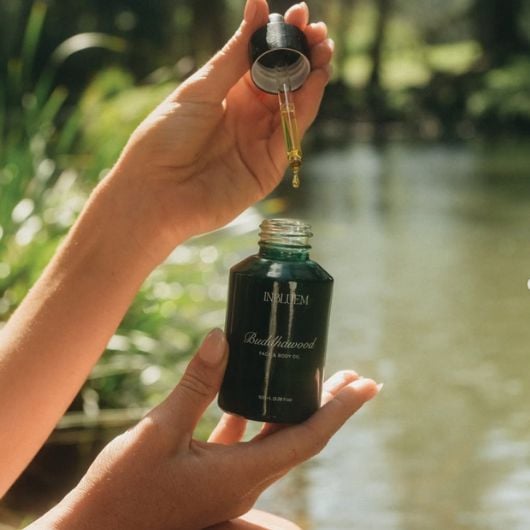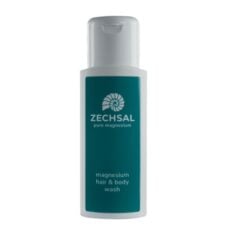Votre Beaute,Zechsal
L’étincelle de la vie : Le magnésium
Magnesium as the spark of life…
Magnesium plays a key role in vital bodily processes.
The origin of life will always capture the imagination. For some, it’s a mystical enigma, perhaps metaphysically rooted. For others, it’s primarily a chemical question. American Nobel laureate Jack Szostak belongs to the latter group. He has demonstrated that the presence of sufficient magnesium ions is a basic requirement for the formation of the first cell structures.
La croyance selon laquelle les premières formes de vie sont apparues il y a environ quatre milliards d’années dans la mer est même acceptable pour de nombreux créationnistes. Cela ne contredit pas nécessairement la main (divine) qui a mis la vie en mouvement. Bien que des surfaces de terre et d’eau douce soient apparues au cours de l’histoire là où il y avait autrefois de la mer, et que la vie y ait évolué, les trois cinquièmes de la surface de la Terre sont toujours recouverts d’eau salée. Sa composition exacte a sans doute fluctué depuis la formation de la Terre, mais on peut supposer que les éléments de base n’ont pas changé. Si l’on fait bouillir un kilo (un peu moins d’un litre) d’eau de mer, il reste 34 grammes de sel. Ce sel se subdivise en environ 30 grammes de chlorure de sodium, communément appelé sel de table, et 3 % de chlorure de magnésium. Le gramme restant est un mélange de sels de calcium et de fer, de carbonates, de bromures, de sulfates, de quelques restes de matière organique et de pollution provenant de l’homme et de l’environnement. Contrairement au terme un peu irrespectueux de « mélange », le processus d’évaporation de l’eau de mer suit un protocole strict. Le chlorure de magnésium est le dernier à précipiter.
The Dead Sea
A particularly fascinating body of water is the Dead Sea, a saltwater lake between Jordan and Israel, which is slowly drying up. Less rainwater flows into it than evaporates out. As a result, the salt content – and thus the magnesium content – is about nine times as high as in the ocean. This extremely high salt content has given the Dead Sea a number of properties that caused health tourism even in ancient times. It has long been known that bathing in the Dead Sea, combined with the filtered UV radiation, has a beneficial effect. Particularly people with various types of skin complaints, but also those formerly referred to as ‘nervous sufferers’, benefit from a treatment visit to the Dead Sea. The high content of magnesium chloride in the Dead Sea water, not only makes you float, but also plays a key role in its effect.
Few people know that you can also benefit from the effects of magnesium chloride much closer to home, for example, in your own bathroom. Zechsal’s magnesium products contain highly concentrated natural magnesium chloride that allows you to enjoy the same relaxing and restorative effects from the comfort of your home, without exposure to pollution or heavy metals often found in open water sources.
Sources naturelles de magnésium
Zechsal utilise du chlorure de magnésium naturel extrait de couches minérales souterraines aux Pays-Bas. Cette source riche en minéraux s’est formée profondément sous la surface de la Terre pendant des millions d’années, créant une forme pure et concentrée de chlorure de magnésium. La matière première est traitée avec soin et un contrôle qualité pour garantir son adéquation à un usage topique. Chaque lot de production est surveillé pour maintenir des normes élevées de pureté. Outre le chlorure de magnésium et l’eau, la matière première contient également des oligo-éléments comme le fer, le manganèse et le bore — tous soutenant naturellement l’équilibre et la relaxation du corps. Le résultat est du magnésium pur et naturel sous sa forme la plus biodisponible.
Magnesium Robbers
The single-celled life that originated in the ocean did not lack magnesium. There was no need to develop a capacity to buffer it, as it was always present. But as life evolved and land creatures emerged, this constant replenishment was no longer a given. Fortunately, magnesium is also found in land food. Nuts, seeds, green vegetables, and bitter chocolate, for example, contain substantial amounts of magnesium. With a bit of common sense, it should not be difficult to gather the daily recommended amount (RDA). However, the generally accepted rule of thumb for this RDA, 6 mg per kilo of body weight, is controversial; the belief that it should be increased to 9 mg per kilo is gaining ground. Anyway: despite the conscious shopping list and the abundance of food, even the minimum RDA is rarely achieved nowadays. And when it is, there are several factors that hinder the effective use of magnesium in our bodies, requiring us to need even more.
The increasingly epidemic shortage of magnesium in modern humans (and many domesticated animals) has several causes. First, there’s our tendency to eat too fat, too salty (sodium), and too animal-heavy. At the same time, our food contains less and less magnesium. Since the start of intensive agriculture, the mineral content in our soil has drastically decreased. On the alarming charts that are published about this, the decrease in magnesium takes a prominent place. In addition, the average consumer also has to deal with the refining techniques of the food industry, which cause vital nutrients, including magnesium, to be lost.
If we still manage to get our portion of magnesium, the body must overcome a number of problems to use it effectively. Magnesium is absorbed slowly and in small amounts by the intestines. It is assumed that only a third of the magnesium provided by food is absorbed. The gastrointestinal tract doesn’t know what to do with large doses via supplementation. Much of it is therefore immediately expelled. Hence the common side effect of oral supplementation, diarrhea.
Having overcome that, there are still a number of robbers lurking: nicotine, alcohol, and medication like magnesium. For example, it was recently shown that among the 2 million Dutch people who take antacids, there might be problems with magnesium supply to tissues. Pregnant women, athletes, and women in menopause also need more magnesium. Another recognized thief is stress. More stress leads to a greater magnesium need, which in turn leads to more stress. Pollution, smog, and electrosmog are also mentioned as magnesium takers, but the main thief for many people is a mineral we also desperately need: calcium.
They actually form a necessary pair: magnesium and calcium. Calcium enables us to exert ourselves, such as contracting a muscle. Magnesium, on the other hand, facilitates relaxation. One cannot function without the other. The ideal ratio between these two antagonists is around 1 to 1. However, there is a growing imbalance in our time. The American food authority, the FDA, found an average ratio among Americans of 6 to 1. The problem is that this excess of calcium hinders the effective functioning of magnesium, so we actually need to take more magnesium to work back to that balance. This is only partially solved by eating very differently; many magnesium-rich foods also contain a lot of calcium.



























 Produits de beauté
Produits de beauté Marques A-Z
Marques A-Z Bien-être
Bien-être santé et nutrition
santé et nutrition